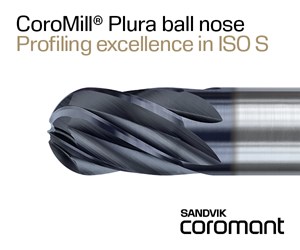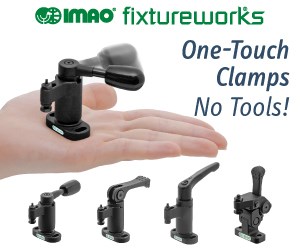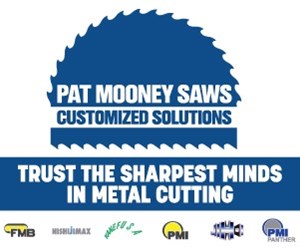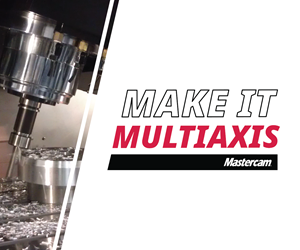Tips for Shop Success
These 10 guiding principles can help shops of all types improve and prosper.
As I travel to my company’s manufacturing locations in various states and countries, it is apparent that our business model and machining operations vary based on each location’s customers, volume, product mix and other factors. Yet, there are similar, overarching guiding principles that ensure success over the long term, regardless of the differences among shops. I have collected 10 of these principles and share them here. I hope this list spurs debate in your shop.
1. Look for similarities, not differences. Engineers, machinists and other technical people are conditioned to notice dissimilarities or differences. But when it is time to standardize, implement lean manufacturing cells, design new components, develop fixtures or write CNC programs, it is time to shift gears and find similarities. Why design a new component when one already exists that will fulfill the requirements? The volume of a component may not be high enough to justify a lean cell, but other parts may be processed on the same workcenters, creating a value stream with enough aggregate demand to warrant a cell. When components are 80 percent similar, take advantage of these traits to utilize existing fixtures, tooling, processes, programs, metrology and so on, and then address the remaining 20 percent. The difference between an engineer who wants to create something new and fancy, and an engineer who uses an existing design is unmeasurable.
2. You are running a sprint and a marathon. Employees seek to achieve customer satisfaction and to optimize metrics, but who is planning for long-term results? Who is ascertaining future customer needs and developing the people, equipment, software and processes to meet these needs before the competition? Many organizations are so focused on the short term that they wake up after several years to discover that their equipment and processes are outdated and unproductive.
3. Quality is productivity. Scrap and rework directly subtract from the bottom line. Borderline quality consumes resources and lowers productivity. Robust processes combined with quality at the source allow machinists to optimize their time and, in this way, perhaps operate multiple machine tools.
4. Go right before you go fast. It is beneficial to have a sense of urgency. However, when there is a new process, a new machine, a new program or just a new setup, things must be “right” before they can be fast. Machines and people make bad parts as fast as they make good parts. Having to make them twice is a lot slower and more expensive than making sure you are right first. Standard work and validations are tools that allow this.
5. Learn and train. Firms that learn faster than their competition will eventually outperform their competition. Train, cross-train and train a little more. Whether the person is a machinist, engineer or inspector, the transfer of knowledge is simultaneously an investment and an insurance policy.
6. Make progress, not perfection. Wars are not won by winning a single battle with no setbacks. When the expectation is that a new machine or new process will deliver maximum results immediately (or else), then the culture becomes risk-averse and not innovative. On the other hand, when progress is recognized and appreciated, the team will soar past the original goals.
7. Inspection must be swift and precise. Inspection should not give away tolerance through measurement or fixture error. There will be naturally occurring variation in machine positioning, tool wear and such, so it is imperative to eliminate the measurement variation, which should be low-hanging fruit. Inspection also must be swift, not only for productivity, but also so the inspector can operate more equipment and collect more data. More data via more parts sampled yields better control of inputs and better centering of the dimension within the tolerance zone. Swift also means timely in terms of the information controlling inputs prior to more parts being produced.
8. If you are not making chips, you are not making money. Whether it is grinding, EDM, turning or another type of machining, the specific goal of the entire organization, from the receptionist to the engineer, is to support operations so that the machine tools will be making chips. It is a simple concept, but there are times that people in the organization lose perspective on the tasks that truly generate the revenue.
9. Operate multiple machines. Set an expectation for engineers, programmers and machinists to automate and innovate workholding, tooling and metrology requirements to achieve unattended machining for as long as possible. This goal likely requires machine accessories for closed-loop machining. This expectation is necessary to win against competitors in economies with lower labor costs.
10. Push decisions to the lowest level. This advice is multi-faceted. You cannot have employees waiting for Oz behind the curtain to tell them what to do. For employees to develop and grow, they need to make decisions. Will they make mistakes? Sure. But their mistakes will be less costly than the apathy and delay resulting from waiting on a senior manager to make a decision. When employees must seek approval at every step, they cannot act with speed and are likely to not act at all.
Continuous improvement requires a culture and awareness among employees that success is more than completing routine tasks using the same process as yesterday. Discussion of these 10 guiding principles is a good first step.
Related Content
8 Ways to Increase Productivity on the Manufacturing Floor
When it comes to machine shop productivity, continuous improvement depends on efficient employees, equipment and processes.
Read More7 CNC Parameters You Should Know
Parameters tell the CNC every little detail about the specific machine tool being used, and how all CNC features and functions are to be utilized.
Read MoreHow To Calibrate Your Calipers
If you’re interested in calibrating your own digital, dial or Vernier calipers, here are some steps to take to make sure it goes off without a hitch.
Read MoreUnderstanding Errors In Hand-Held Measuring Instruments
Different instruments (and different operators) are prone to different errors.
Read MoreRead Next
The Cut Scene: The Finer Details of Large-Format Machining
Small details and features can have an outsized impact on large parts, such as Barbco’s collapsible utility drill head.
Read More3 Mistakes That Cause CNC Programs to Fail
Despite enhancements to manufacturing technology, there are still issues today that can cause programs to fail. These failures can cause lost time, scrapped parts, damaged machines and even injured operators.
Read More












.png;maxWidth=300;quality=90)












